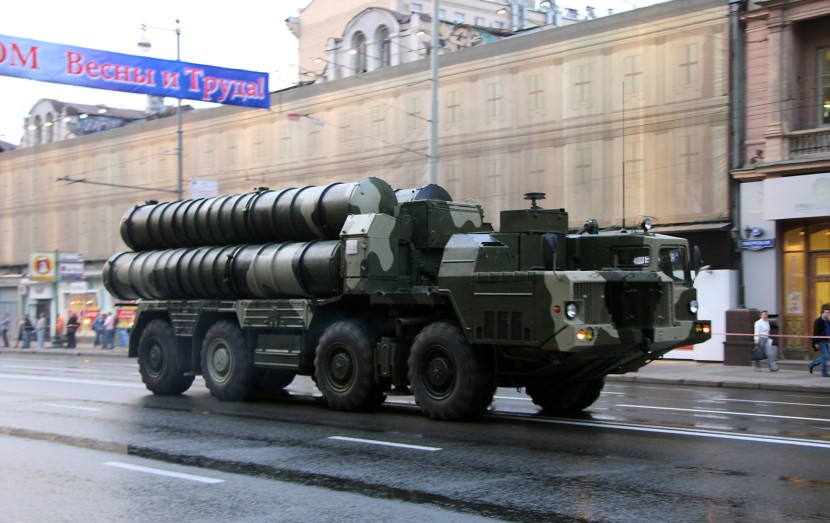
Over the last decade, Iran invested more than $10 billion in Russian weapons, aiming to construct what it believed to be an "impenetrable shield." This arsenal included sophisticated S-300 air defense systems, MiG-29M fighter jets, and advanced electronic warfare units such as radar-jamming equipment. Yet, in a stunning display of military prowess, hundreds of Israeli jets, drones, and even seven B-2 bombers executed every mission successfully—destroying the majority of Iran's air defense sites and assets. Within just 48 hours, Israel claimed air superiority over Iran's entire airspace.
This rapid dominance stands in stark contrast to Russia's own performance in Ukraine, where, after more than three years of warfare, Moscow has failed to achieve similar air superiority. The disparity highlights a critical truth: Russia's much-vaunted military capabilities often collapse under real-world combat pressure—shattered by the decisive edge of Western technology, doctrine, and operational competence.
Russian Weapons in Action: From Iraq to Iran
Iran's multi-billion dollar military overhaul relied heavily on Russian support, with roughly 96% of its arms imports coming from Moscow. However, this extensive rearmament proved futile against the Israeli offensive. Experts attributed Israel's success to "superior Western weaponry, rigorous training, unmatched intelligence networks, and precise operational planning"—a combination Russia has been unable to replicate.
The Israeli attack echoed the opening hours of the 1991 Gulf War. Back then, Iraq—also equipped with advanced Soviet weaponry such as T-72 tanks and MiG-29 fighters—faced a similar fate. U.S. F-117 Nighthawk stealth bombers launched the first wave of strikes, and Iraqi radar and air defense units, unable to detect the aircraft, "didn't even know an attack had begun." By the time operators realized something was wrong, it was too late: key defensive infrastructure had already been neutralized.
Ukraine's Stubborn Skies – A Grinding Stalemate
When Russia invaded Ukraine in February 2022, most analysts predicted the Russian Aerospace Forces (VKS) would swiftly dominate Ukrainian airspace. But that expectation proved fundamentally flawed. Thanks to early warnings from U.S. intelligence, Kyiv rapidly dispersed its mobile surface-to-air missile (SAM) batteries and evacuated fighter jets, ensuring that initial Russian strikes hit decoys or empty hangars.
Ukraine's air defenses responded with intensity, shooting down dozens of Russian aircraft, including modern Su-34 and Su-35 jets. Within the first few months, Russia had reportedly lost over 75 fixed-wing aircraft.
Western support further bolstered Ukraine's defenses, with advanced systems like NASAMS, IRIS-T, and Patriot batteries being deployed. In a landmark moment, a U.S.-supplied Patriot battery shot down multiple Russian Kinzhal hypersonic missiles over Kyiv in May 2023—missiles that Moscow had previously declared "practically unstoppable." Ukrainian officials confirmed that every Kinzhal missile fired at Kyiv since May 2023—over 20 in total—had been successfully intercepted.
Ukraine has also exposed weaknesses in Russian air defenses, using long-range drones and modified missiles to strike targets deep inside Russian territory, including air bases and even Moscow itself.
The Achilles' Heel: Why Russian Weapons Fail
Russia's military shortcomings are not limited to Ukraine. Similar failures have been observed in conflicts across Syria, Libya, and the 2020 war between Azerbaijan and Armenia. The Pantsir-S1 air defense system, touted as a counter to cruise missiles and drones, was consistently destroyed by Israeli and Turkish strikes. Even the S-300 SAM system failed to detect or engage small drones during the Nagorno-Karabakh conflict.
On the ground, Russian armored forces have suffered catastrophic losses due to a long-known design flaw: ammunition stored in an autoloader carousel beneath the turret. Western anti-tank weapons like the Javelin exploit this vulnerability by striking from above, often igniting the ammo and ejecting the turret entirely—an effect Ukrainian soldiers grimly nickname a "jack-in-the-box."
These failures are compounded by systemic corruption in Russia's military-industrial complex. Funds earmarked for R&D, quality materials, and testing often disappear. Inspections have revealed explosive reactive armor blocks on Russian tanks to be either empty or filled with ineffective materials, leaving crews dangerously exposed. Russia's reliance on outdated manufacturing techniques and Cold War-era technology is another critical limitation; many of its missiles still use basic semi-active radar or inertial guidance systems, whereas Western counterparts utilize multimode seekers with AI-enhanced targeting.
Naval Disasters and Doctrinal Failures
Perhaps the most humiliating setback for Russia was the sinking of the Moskva, its Black Sea Fleet flagship, by just two Ukrainian-made Neptune R-360 missiles. The cruiser, worth an estimated $750 million, was destroyed by weapons costing a fraction of that amount. Its outdated radar systems failed to detect and intercept the incoming missiles in time. By contrast, the USS Mason, a U.S. Navy destroyer, successfully intercepted Iranian-made anti-ship missiles off the coast of Yemen in 2016 using modern defense systems and electronic countermeasures.
Russia's rigid and centralized military doctrine has also proven to be a liability. Its strategy emphasizes overwhelming firepower and strict top-down command structures—vulnerable to disruption when communications are jammed. In contrast, Western forces utilize decentralized, adaptable command systems and encourage initiative at lower ranks. Russian units, lacking such flexibility, often become paralyzed when plans collapse and new orders fail to arrive.
Western Edge: A Clear Disparity
Israel's rapid dominance over Iran, like the coalition's success in the Gulf War, wasn't due to sheer numbers but strategic superiority. The F-35I fighter jets used by Israel—customized with cutting-edge Israeli electronics—are designed to be virtually undetectable. Iran's Russian-supplied radar systems had little chance of spotting them.
On the ground, Western-supplied tanks such as the Leopard 2, Challenger 2, and M1 Abrams have demonstrated superior protection, accuracy, and survivability in Ukraine. Their advanced optics, thermal sights, and digital fire control systems consistently outclass their Russian counterparts.
Moreover, Ukraine's battlefield success is driven by superior intelligence, logistical resilience, and rapid decision-making—factors that continuously keep it a step ahead of Russia.
A Global Wake-Up Call
Russia's repeated battlefield failures have seriously undermined its reputation as a leading arms exporter. Once the world's second-largest arms supplier, Russia has now slipped to third place, and its global sales are expected to decline further. Governments worldwide are watching Ukraine closely—and drawing unmistakable conclusions. As Russian tanks, air defenses, and missiles are systematically neutralized or defeated, Ukraine has become a living case study of what not to buy.
Ultimately, real-world combat effectiveness speaks louder than propaganda. The gap between Russia's advertised military prowess and its actual battlefield performance has never been more exposed.
© 2025 HNGN, All rights reserved. Do not reproduce without permission.








